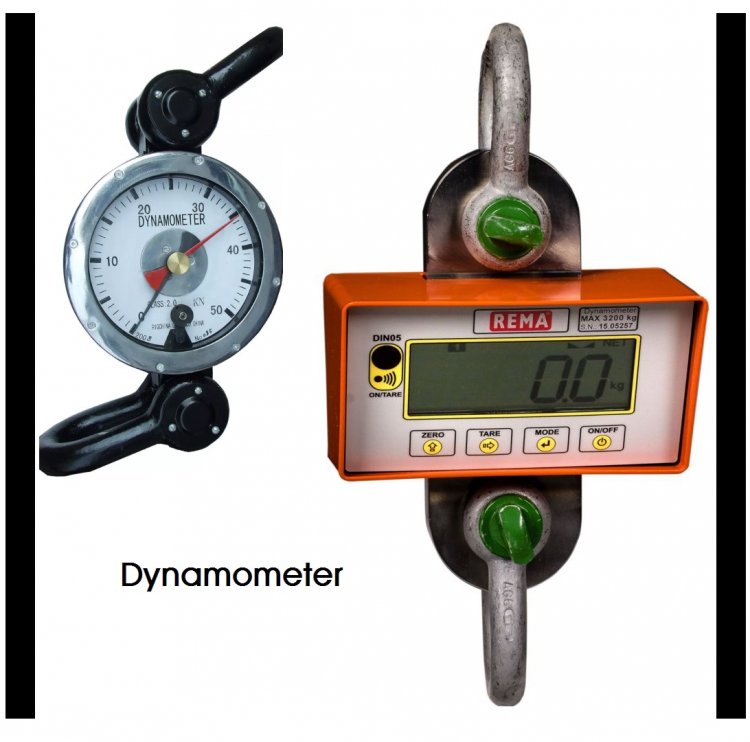Dynamometer, types, applications
Dynamometer, types, applications

Dynamometer, types, applications
What is dynamometer?
A dynamometer, or "dynamometer" for short, is a device for measuring force, moment of force (torque), or power. For example, the power produced by a rotating engine, engine, or other prime mover can be calculated by simultaneously measuring torque and rotational speed (RPM).
A dynamometer can also be used to determine the torque and power required to operate a pump-driven machine. In this case, a car or driving dynamometer is used.Absorption or passive dynamometers are the name for dynamometers used for driving. A dynamometer that can drive or absorb is called a universal or active dynamometer.
Who invented dynamometer?
The Rainier dynamometer was invented and made public in 1798 by Edme Rainier, a French gunmaker and engineer. A patent (dated June 1817) was granted to Zieba and Marriot of Fleet Street, London for an improved shell.
Types of dynamometer:
Dynamometers can be divided into two types:
1)Power absorption dynamometers:
Power absorption dynamometers measure and absorb the power provided by the engine they are connected to. The absorbed power is usually dissipated in the form of heat in some way.
Examples of power absorption dynamometers are Prony brake dynamometer, cable brake dynamometer, eddy current dynamometer, hydraulic dynamometer, etc.
2)Power Transfer Dynamometers: In power transfer dynamometers, power is transferred to a load connected to the engine after being indicated on a scale. They are also called torque meters.
More types:
There are different types of force gauges commonly used in different applications. Here are some of the main types:
1)Absorption Dynamometers:
A. Eddy Current Dynamometer:
This type of dynamometer uses a magnetic field to create resistance and extract power from the motor or motor under test. An eddy current is induced in a conductive disc or drum that rotates with the motor. By changing the strength of the magnetic field, you can adjust the amount of resistance.
B. Hydraulic dynamometer:
Hydraulic dynamometers use a fluid-filled chamber to absorb the power from the motor or engine. The fluid is usually water or oil and flows through a series of channels or passageways, creating resistance and dissipating heat.
C. Prony brake dynamometer:
This is a mechanical dyno that uses friction to absorb force. It consists of a stationary brake shoe or drum that applies pressure to a rotating disc or drum connected to a motor or motor. The friction between the brake and the disc absorbs the force and makes it possible to measure the torque.
2)Transmission Dynamometers:
A. Torque Sensor Dynamometer: This type of dynamometer measures torque directly using torque sensors such as strain gauges. Draws no current, but provides accurate torque measurement. It is often used for research and development.
B. Power Absorption Unit (PAU) Dynamometer: PAU dynamometers are commonly used in large scale industrial applications. They use a combination of hydraulic or electric charging units to absorb and manage power.
C. Torque Dynamometer: Torque dynamometers measure the torque generated by an engine or engine by measuring the rotation or voltage of a calibrated shaft or part. They are often used for high torque applications.
Applications:
Dynamometers have different applications in different industries. Here are some common uses for force gauges:
Engine Testing: Dynamometers are widely used to test and evaluate engines, including internal combustion engines (gasoline, diesel) and electric motors. They provide valuable data on horsepower, torque, RPM, fuel consumption, emissions and overall performance characteristics. Engine manufacturers use dynamometers to ensure the quality and performance of their products, while researchers and car enthusiasts use them to tune and analyze performance.
Performance Analysis: Dynamometers are used to measure and analyze the performance of vehicles and machines. By connecting a dynamometer to the vehicle's transmission, performance metrics such as horsepower, torque and acceleration can be accurately measured. This information is essential for evaluating and comparing the capabilities and performance of different vehicles or machines.
R&D: Dynamometers play a vital role in R&D in various industries. Engineers and scientists use dynamometers to study and optimize the performance of motors, engines and other rotating equipment. They help develop and test new technologies, explore ways to improve efficiency, and evaluate the impact of various metrics on performance.
Quality Control: In production environments, force gauges are used for quality control. They ensure engines, motors and other equipment meet established performance standards before they are delivered to customers. By subjecting products to dynamic testing, manufacturers can detect anomalies or defects in performance and take appropriate corrective action.
Education and training: Dynamometers are an invaluable resource for educational institutions and training centers. They provide practical experience for students studying automotive engineering, mechanics and related fields. Dynamometers enable students to understand the principles of power and torque measurement, engine performance, and experimental analysis.
Calibration and Certification: Dynamometers are used to calibrate and certify power measurement equipment. They provide a known reference load or torque against which other gauges can be calibrated and verified. This ensures the accuracy and reliability of power measuring instruments in various industries.
What's Your Reaction?





















